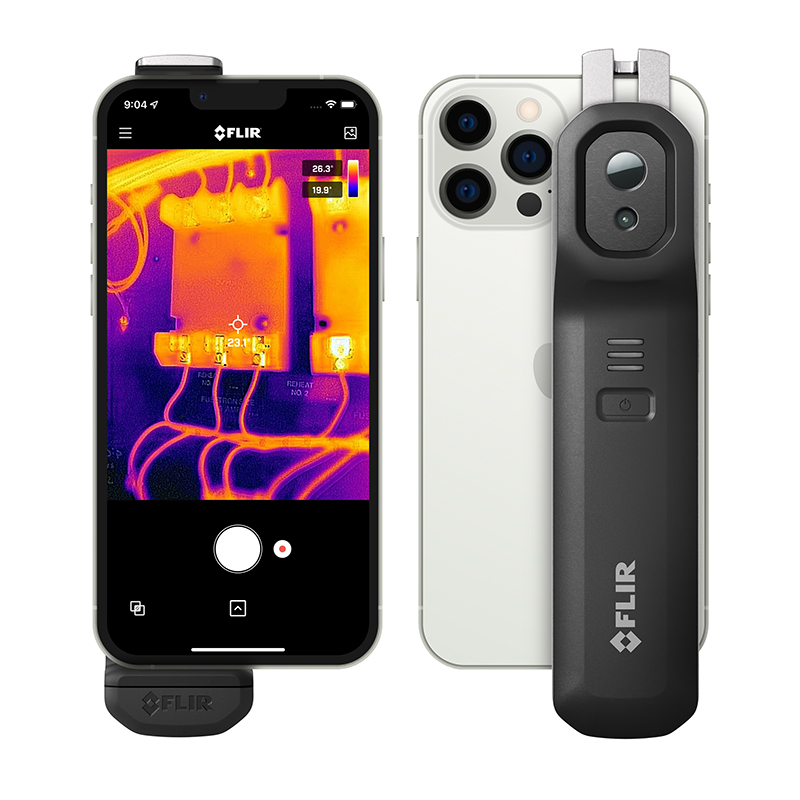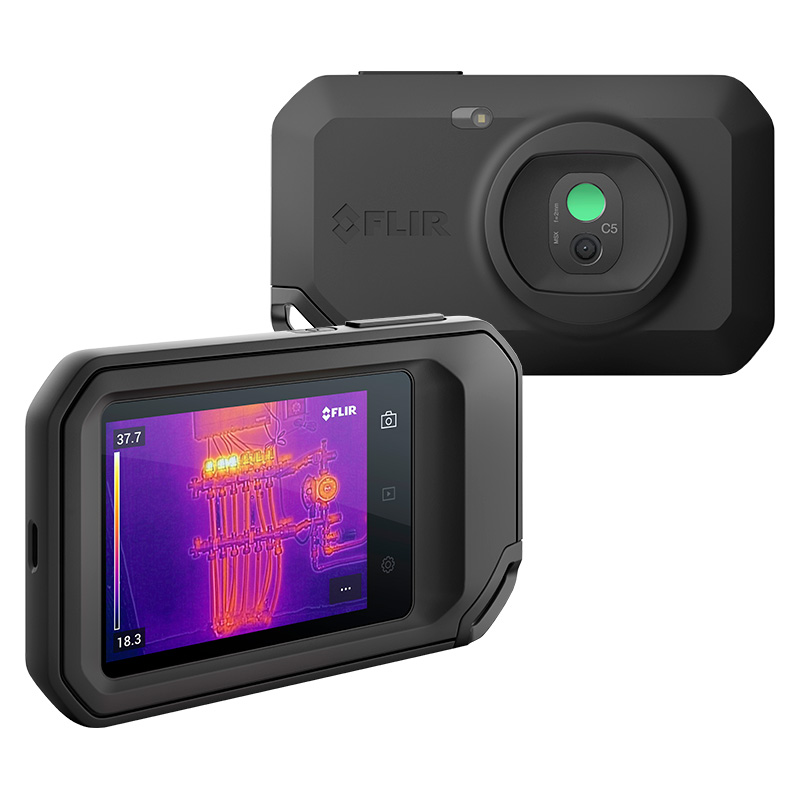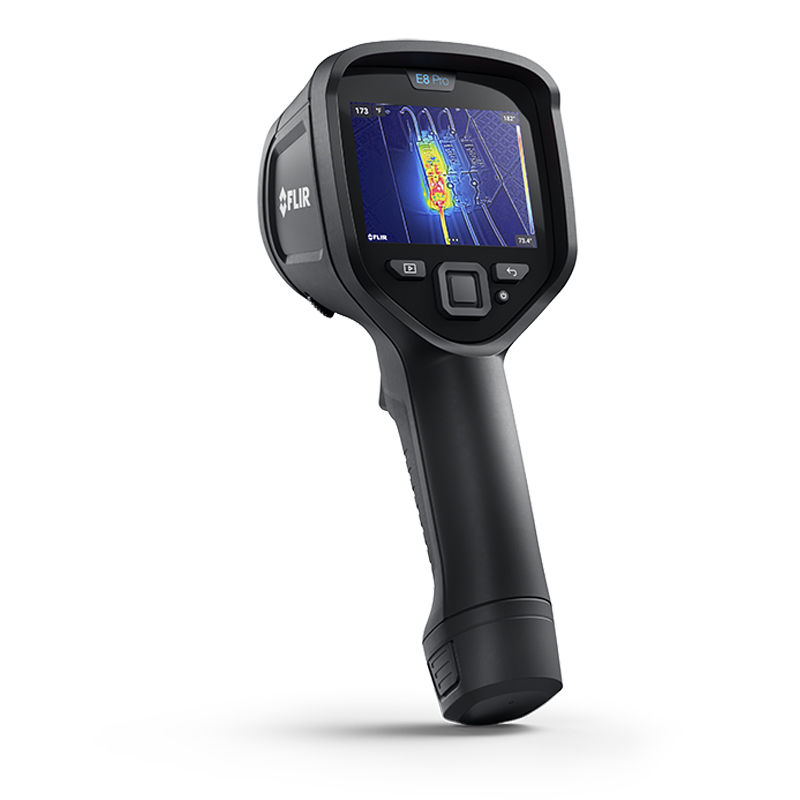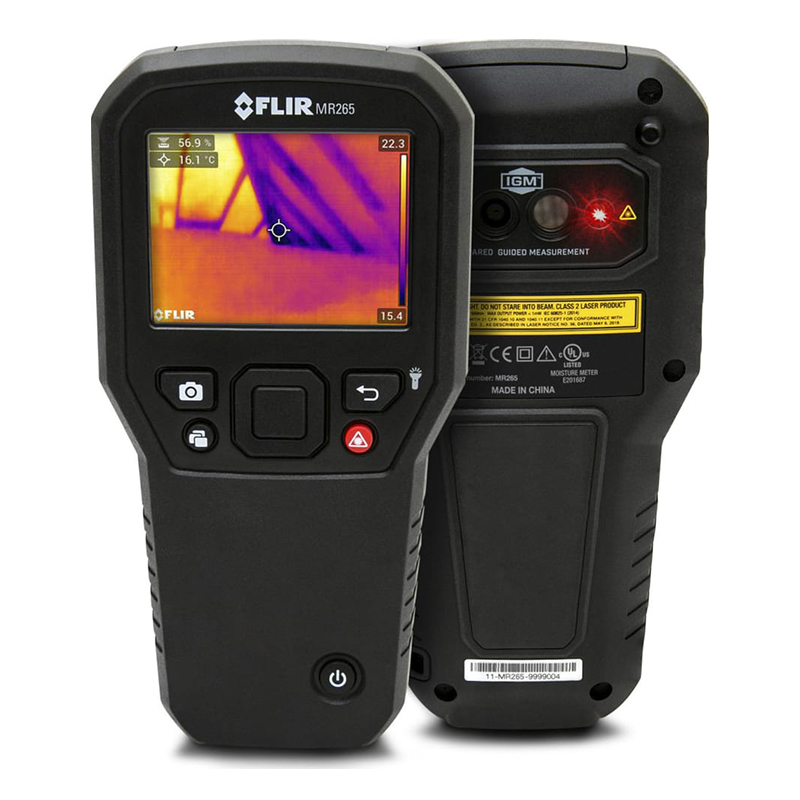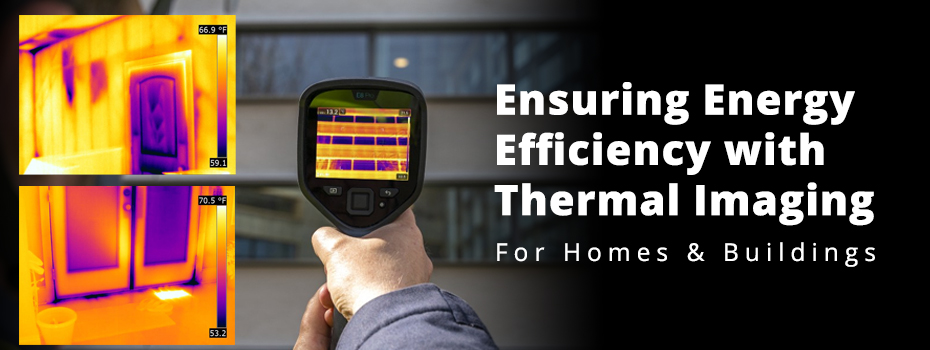
Last year as winter descended and energy prices rose, news outlets were awash with reports about charities, councils, and insurance companies using thermal imaging to pinpoint sources of heat loss. These stories made headlines because they detailed an innovative method that enabled patrons/customers to target insulation work effectively, subsequently reducing their energy consumption, heating bills, and carbon emissions. What in 2022 began as a little-known method of optimising energy efficiency has become increasingly popular throughout 2023. Now, as winter creeps in once more, ensuring homes are energy efficient is crucial. That’s why Teledyne FLIR has provided some top tips on what to look out for when conducting a thermal survey of your home.
Quick Links
- How Have Thermal Cameras Made Headlines in 2023?
- What Are Teledyne FLIR’s Top Tips for Identifying Heat Loss?
- Which Teledyne FLIR Thermal Cameras Are Best for Energy Auditing?
- Further Information
How Have Thermal Cameras Made Headlines in 2023?
Stories about thermal imaging improving energy efficiency emerged in 2022. In that year, we detailed reports on how both Cambridge Carbon Footprint and South Somerset District Council adopted the technique. We also proudly supplied Octopus Energy with hundreds of Teledyne FLIR One Pro and One Edge Pro Thermal Cameras for their loan scheme. A program aimed at improving the insulation of customers’ homes, with a view to decreasing their energy costs.[1]
2022 News Roundup – Thermal Cameras Used to Reduce Energy Bills & Carbon Footprints
PASS Proudly Provides FLIR Thermal Cameras for Octopus Energy Home Efficiency Surveys
In 2023 media outlets were flooded with reports of various councils, action groups, and businesses utilising thermal imaging to reduce energy consumption, emissions, and costs. For example, councils in London (Kensington and Chelsea), Leeds, and Somerset (Nailsea) all invested in thermal technology to improve energy efficiency across their boroughs.[2] Similarly, a community group in Gunnislake and a Shropshire-based climate action NGO both purchased thermal cameras for the purpose of providing free energy efficiency surveys.[3] Skipton Building Society has also initiated a practice of using thermal imaging to understand the energy performance of properties.[4]
What Are Teledyne FLIR’s Top Tips for Identifying Heat Loss?
Teledyne FLIR explains that, over time, all buildings are affected by moisture ingress and insulation degradation. Therefore, they suggest property owners regularly inspect their assets for deterioration. As illustrated in multiple news stories, thermal cameras are effective, efficient, and easy-to-use tools for identifying underperforming or declining areas of buildings.[5]
Insulation
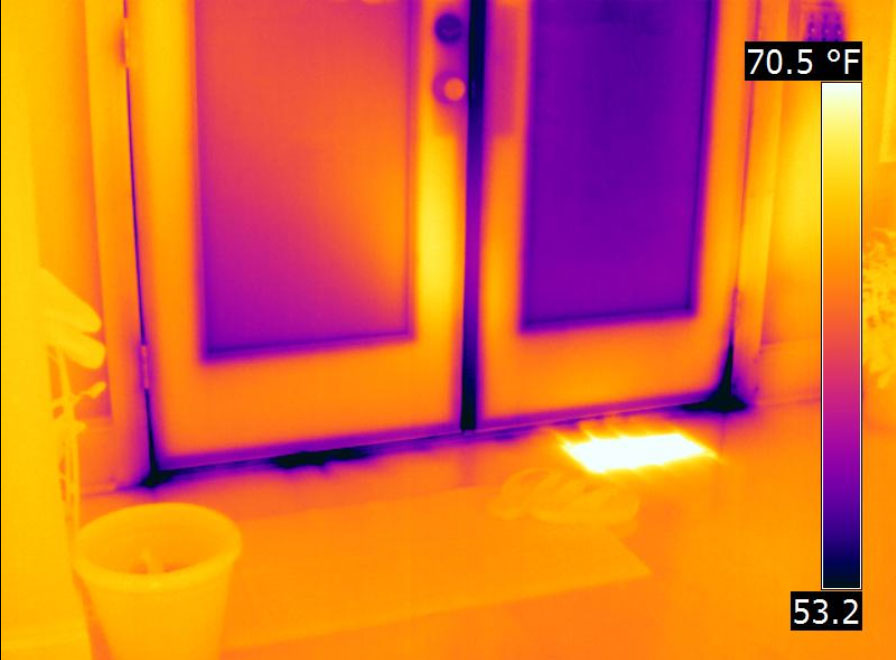
Teledyne FLIR advises that the first area to inspect using a thermal camera is the weather stripping around doors and windows. This is because poorly installed or disintegrating sealing can be a pernicious source of heat loss. Furthermore, stripping materials often shrink in the cold, resulting in large gaps that allow heat to escape and air to flow. Sub-par weather stripping can mean that, because heat keeps escaping, your heating system works harder to keep rooms at temperature. Consequently, they draw more energy and your bills and emissions go up. Teledyne FLIR posits that by sealing gaps property holders could save up to 20% on their energy bills.
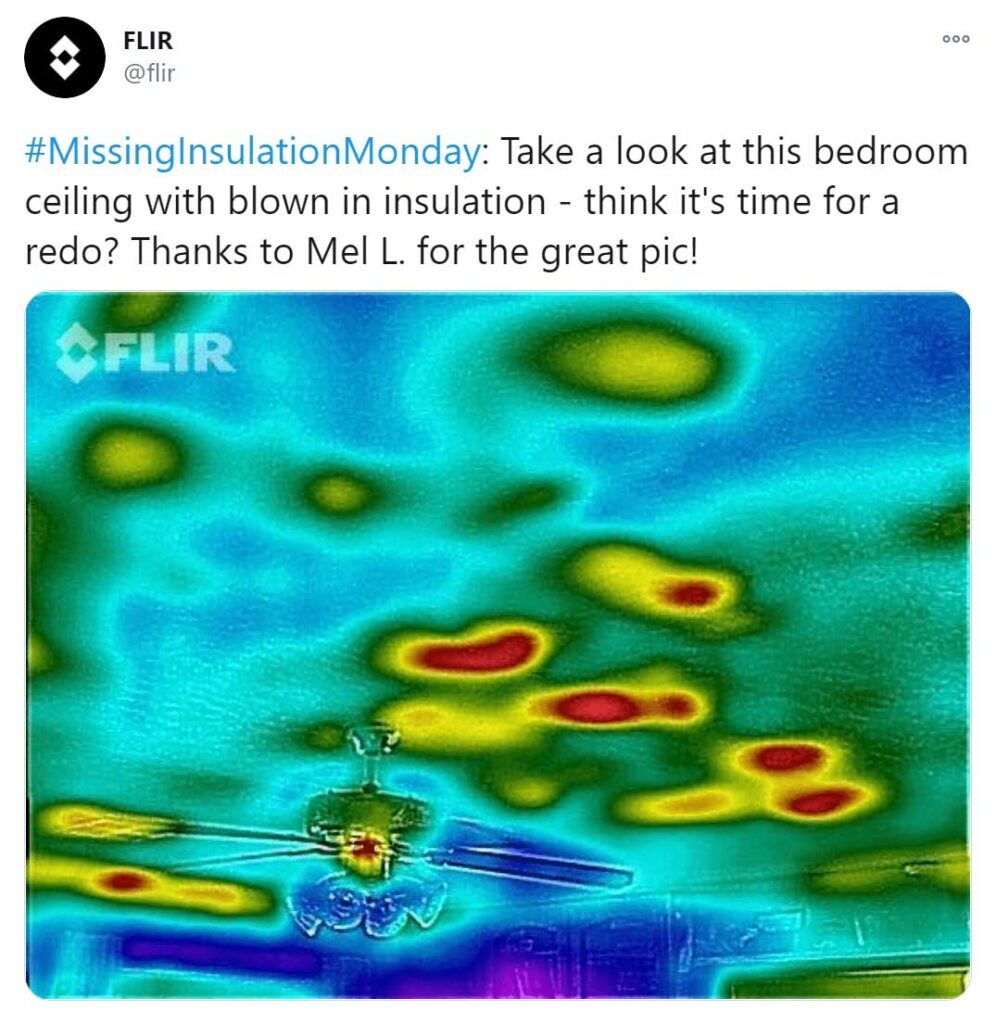
Similarly, degrading or shifting insulation can cause heat to leak from properties. Using a thermal camera to identify cold spots can help you re-insulate effectively. Teledyne FLIR advocates using a thermal camera to check for poor insulation when there is a 6°C difference between the temperature inside the building and the temperature outside, as poorly insulated spots will show clearly.
Moisture
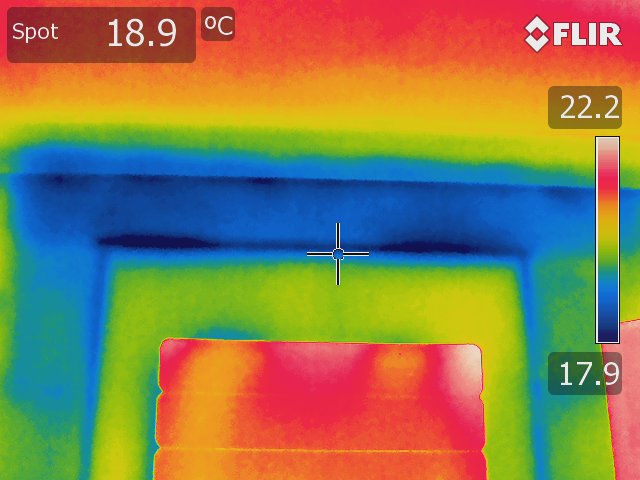
Moisture can also result in cold spots within houses, once again, causing heating systems to work harder. Teledyne FLIR recommends checking bathrooms, kitchens, laundry rooms, basements, attics, and outward-facing walls, reasoning that these are often exposed to moisture which may enter via cracks, leaking pipes, faulty HVAC systems, and as condensation. Build-up of moisture can result in mould growth, structural damage, and health problems. Therefore, identifying moisture early is critical to ensuring repairs are implemented before significant and costly damage is incurred. Additionally, repairs will enhance the energy efficiency of buildings, thereby reducing fuel usage, costs, and emissions.
For additional tips and tricks on ensuring the energy efficiency of buildings, please consult our following blogs.
PASS Proudly Provides FLIR Thermal Cameras for Octopus Energy Home Efficiency Surveys
Winter Is Coming – Prepare Your Home for the Long Night(s) Using Teledyne FLIR Thermal Cameras
Which Teledyne FLIR Thermal Cameras Are Best for Energy Auditing?
Teledyne FLIR offers an eclectic selection of thermal imaging cameras spanning entry to premium models. All these thermal cameras are suitable for identifying heat loss. Nevertheless, Teledyne FLIR has highlighted the following entry, mid-range, and premium thermal cameras for the purpose of energy auditing.
Teledyne FLIR One Edge Pro Thermal Camera
Entry Level
Price: £350 (Ex VAT)
- Compatible with iOS & Android
- Clip-on design
- IR Res: 160 x 120px
- Temp range: up to 400°C
- MSX mode
- FLIR VividIR
- Compatible with FLIR Apps
- Compatible with FLIR's Thermal Studio Software
- Compatible with FLIR Ignite Cloud
- Battery Life: 1.5 hours
- Rugged
Teledyne FLIR C5 Compact Thermal Camera
Mid Range
Price: £544 (Ex VAT)
- IR Res: 160 x 120px
- 5MP visual camera
- Temp range: up to 400°C
- MSX mode
- Thermal mode
- Visual mode
- Picture-in-Picture mode
- 1-Touch Level/Span
- Automatic & Manual level & span
- Selectable thermal palettes
- Wi-Fi connectivity
- Compatible with FLIR Ignite Cloud
- Compatible with FLIR Thermal Studio
- Compact
- IP54
- 2m drop tested
- 3.5" touchscreen
- Built-in torch
- Battery life: 4 hours
Teledyne FLIR Ex-Pro Series Thermal Camera
Premium Model
Price: From £1349 (Ex VAT)
- Three Models: E5 Pro, E6 Pro, & E8 Pro
- IR Res: up to 320 x 240px (model dependent)
- 5MP visual camera
- Temp range: up to +550°C (model dependent)
- Thermal mode
- Thermal Blending mode
- Digital Camera mode
- MSX mode
- Picture-in-Picture mode
- Selectable thermal palettes
- Wi-Fi connectivity
- Compatible with FLIR Tools Apps
- Compatible with FLIR's Thermal Studio Software
- Compatible with FLIR Ignite Cloud
- Compact
- Lightweight
- 2m drop tested
- IP54
- 3.5" touchscreen display
- Display resolution: 640 x 480px
- Built-in torch
- Battery life: 4 hours
Teledyne FLIR points out that individuals should not rely solely on thermal cameras to pinpoint moisture. To accurately identify the presence of water, thermal imaging must be used in conjunction with a moisture meter. As such, Teledyne FLIR has designed a convenient instrument that combines thermal imaging and moisture detection: the MR265.
Teledyne FLIR MR265 Thermal Imaging Moisture Meter
Price: £919 (Ex VAT)
- Pin & pinless moisture meter
- Electromagnetic/capacitive pinless moisture sensor
- Pin probe resistive sensor
- Built-in thermal camera
- IR res: 160 x 120px
- 2MP visual camera
- MSX mode
- FLIR IGM technology
- Built-in memory
- Compatible with FLIR Thermal Studio Software
- Built-in work light
- Rugged
- 2m drop tested
- RESNET standards
Further Information
To learn more about using thermal cameras to improve the energy efficiency of buildings, please see our library of blogs on the subject.
Blog Series: Thermal Cameras Maximise Energy Efficiency
Alternatively, our Sales team are more than happy to answer any queries and provide advice on our extensive array of moisture meters and thermal cameras. Please don’t hesitate to contact them on 01642 931 329 or via our online form.
In the meantime, you can browse our vast array of energy auditing and building inspection thermal cameras, including Teledyne FLIR models, and moisture meters below.
All Energy Auditing & Building Inspection Thermal Cameras
Teledyne FLIR Energy Auditing & Building Inspection Thermal Cameras
[1] Jessica Wright, ‘News Roundup: Thermal Cameras Used to Reduce Energy Bills & Carbon Footprints’, and, ‘PASS Proudly Provides FLIR Thermal Cameras for Octopus Energy Home Efficiency Surveys’, PASS Ltd, last accessed 29 November 2023.
[2] Rachel Burford, ‘London Council lends out thermal cameras to help homes cut fuel costs’, Evening Standard via Yahoo! News; Heather Pickstock, ‘Council buys thermal imaging camera to check energy efficiency of homes’, Somerset Live; Mark Say, ‘Leeds City Council tests new thermal imagery to support work on decarbonising housing’, UK Authority. All last accessed 29 November 2023.
[3] Megan Howe, ‘Climate group offering free thermal imaging service for local residents’, Shropshire Star; Hannah Rooke, ‘Village uses thermal imaging camera to tackle heat loss and save money’, Digital Camera World. All last accessed 29 November 2023.
[4] Sarah Lumley, ‘Three in five UK households have a poor energy performance rating, data shows’, Coventry Live, last accessed 29 November 2023.
[5] Information for this section was gathered from the following source:
- Teledyne FLIR, Ensuring Energy Efficiency for Homes or Buildings with Thermal Imaging, last accessed 29 November 2023.


